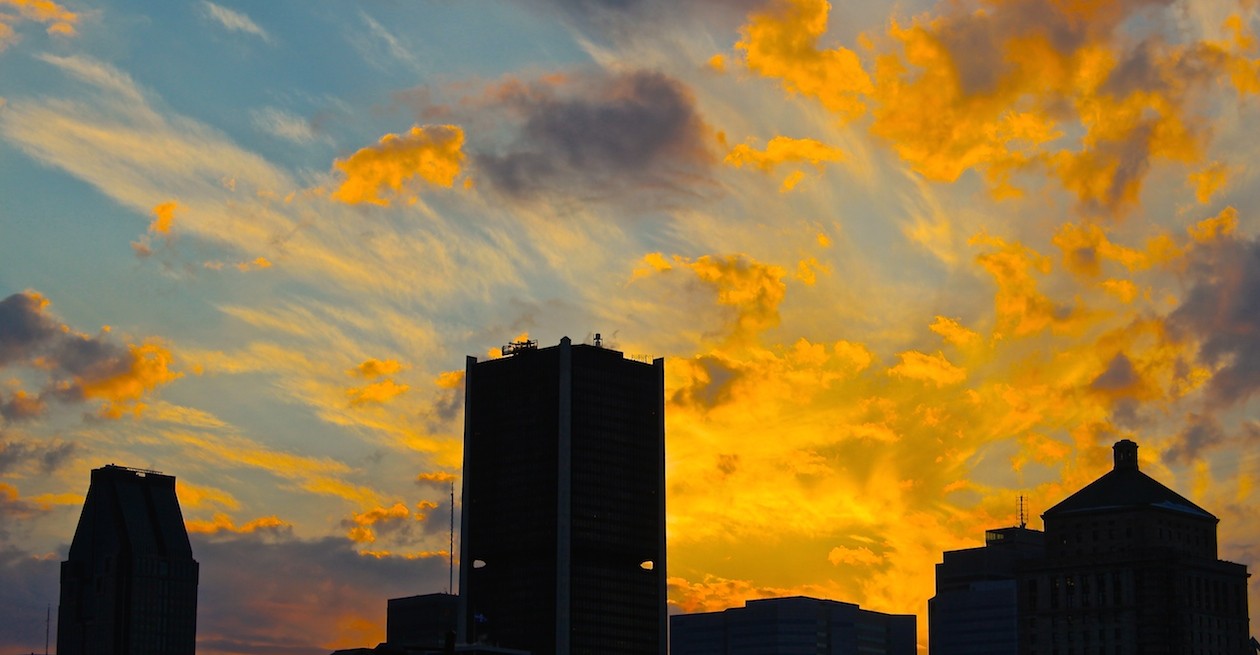
Jean Drapeau with the French actor Jean Marais, 1965
A fascinating piece by noted Montréal affairs columnist Francois Cardinal on why we simply have no reason to be as down on ourselves as we so stereotypically are.
He attributes the problem to the twin issues of going two decades (and I’d argue further still) without an inspiring mayor and the related drop in civic engagement. Keep in mind, Mayor Tremblay was elected in 2009 with an all-time low in voter participation, less than 40% of the eligible voting population actually participated.
The eroding levels in civic engagement are in turn a result of the various scandals which have dogged both the Bourque and Tremblay administrations. Mayor Applebaum has his work cut out for him in terms of restoring civic confidence in municipal administration, and it will certainly colour the forthcoming local elections roughly a year from now.
We can’t ignore the fact that Tremblay, Bourque, Doré and Drapeau all managed to accomplish some things during their tenures, but there’s been a gradual depreciation in overall vision since the early years of the Drapeau administration. At the same time, what we expect from our mayors has declined as well, as has their openness to the actually engaging the public.
We’ve permitted our elected local politicians to hold themselves in higher esteem than most of them are worth, and we’ve become bitter and cynical at the mere idea or mention of an inspiring local leader. Perhaps its because Drapeau, that bug-eyed nerd and soft-dictator, was our last legitimate city-builder mayor. He was corrupt, it’s well documented. But at least he managed to channel his corruption towards the betterment of the city.
Our next mayor needs to be able to present a clearly articulated vision of a future city, a future standard of living and community we hold to be better than what we currently have. Our next mayor must have a plan to solidify our city and citizens’ financial foundations, create new jobs and consistently expand the population base living within the city proper. We need a plan for growth, development, evolution and an idea of what a more perfect city looks and feels like.
An interesting note, the Tremblay administration was able to develop the Montréal2025 document, a mega-project composed of many small, largely disparate private development initiatives and a few larger provincially-funded developments. It’s about as close to a master plan as we currently have, though it’s lacking in multiple areas (I find it overly focused on building new residential units in the city without any provisions for new social infrastructure, among other problems).
Our future mayor should seek to build off this, but ask broader questions about how to create a more egalitarian society, how to eliminate waste and inefficiencies to maximize the value of local tax-dollars, how to provide incomparable servies for the benefit of all citizens.
If I was planning for 2025, I would want the following:
1. A public transit system so well designed and effective automobiles are no longer required for travel throughout the metropolitan region. A system that clears our highways of congestion and allows car-owners to stretch out the lives and minimize costs associated with owning a car simply by not needing to use it as often. A system that could facilitate more pedestrian streets, green alleys and bike lanes in the dense urban core and allow travel throughout the metro region on a single low-fare, any time of the day. I consider this to be a basic standard for what a city such as our own will require in terms of public transit in the future.
2. An expansion on the existing plans to re-populate the city-centre by providing for the construction of new schools, parks, playgrounds, gyms, daycares, clinics, libraries and community centres (among other required pieces of social infrastructure) as ‘community anchors’ to encourage families to live in the city proper. The prominence of abandoned heritage buildings in parts of the urban core provide numerous locations for such facilities to be housed, but the city needs to take a leading role in this kind of development as it’s precisely a point of local prerogative. On a similar note, the city should take a leadership role in helping in the establishment of small-businesses owned and operated by local residents, such as by providing subsidized commercial space. Furthermore, the city should become far more implicated in maintaining higher local housing standards, in securing subsidized rental properties for students and low-income earners and in providing renters the means to eventually own their property, whether through a city-run RHSP type savings vehicle or by creating more co-operative housing projects.
3. The development of new means for the city to generate revenue outside increased taxation, the equivalent of local crown corporations, financed initially through taxation but with the aim of becoming solvent and then seeking to generate money for city development. This could come in many forms, be they various cultural and leisure attractions, festivals, sports facilities, stadiums, theatres and other performance venues etc. They add to the prestige of the city inasmuch as they serve to attract international attention, tourists and the chances we may one day hold massive international events as we did in the past. We also happen to have a very long list of proposals which never got off the drawing board we could re-consider – at least our next great mayor wouldn’t have to start from scratch.
In any event, just a few thoughts.

